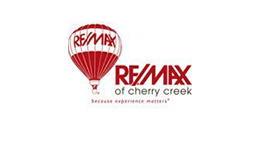Country Club
Called the “Spanish Suburbs” in the early 1900’s for its tile roofs, stucco, and its distance from the city proper, the Country Club neighborhood today is one of the most beautiful in Denver.
In the 1880’s, Denver’s population was reaching 35,000 and railroad expansion led to the city’s continued growth. Mansions were built on Grant and Sherman around the recently finished Capitol (1886), and the Gentleman’s Driving Association incorporated in 1880 building a harness racing track at 4th and Corona. Socially prominent members of the association included Justice Moses Hallet (Colorado Supreme Court), H. A. W. Tabor (the mining mogul), Walter S. Cheesman (real estate/railroad developer), and Gilbert B. Reed (Court of Appeals Judge). The racing became so popular that the association added an elaborate clubhouse for fans. However, by 1888 the renamed Denver Driving Park Association had declined. They took advantage of the significant increase in property values and sold their land to Mr. H. C. Lowrie who formed the Driving Park Land Company and developed the Driving Park Place subdivision.
While the neighboring Arlington Park subdivision reached its heyday in the 1890’s with Chutes Park and related activities, the Country Club area remained farmland. John Jacob Riethmann, founder of the first German bank in Denver, bought 391 acres along Cherry Creek. As for many people, Riethmann lost everything with the Silver Crash of 1893.
After Henry Roger Wolcott introduced golf to Denver, a number of prominent businessmen decided to create the Country Club with land they purchased from Riethmann in 1901. The clubhouse was opened in 1905 and polo grounds were created on the West Side of the property, which drew many people to the area.
Essentially the Country Club neighborhood subdivisions were developed from West to East beginning at Downing Street in 1905. Park Club Place, the first subdivision to be developed, was platted between 1st and 4th Avenues from Downing to Humboldt. To create a spacious and stately feeling, double lots were required (50 x 125 feet); South of 3rd Avenue, 6 to 12 lots were required.
William Ellsworth Risher planned the Country Club Place subdivision for the 4th Avenue Realty Company. The lots were the same size as those in Park Club Place but with the addition of wide parkways and medians. The unique Spanish gate at 4th and Franklin marks the original entrance to the Country Club and is in many ways the signature of the neighborhood.
Country Club Annex, between Race Street and the alley bordering Gaylord and University was established in 1889. This area was initially home to blue collar, middle class residents. Many Tudors are found in this portion of the neighborhood.
The newest subdivision in Country Club, Park Lane Square (Circle Drive), was designed in a circular plan by renowned landscape architect Saco DeBoer in 1926. Many of the most exquisite residences of Country Club are located here. The 58 lots in the subdivision were platted at an average size of 18,000 square feet. The lack of alleys and sidewalks, as well as the unique curved streets, give this area a great sense of privacy despite its close proximity to Cherry Creek shopping and downtown.
In contrast with the elaborate homes found on Circle Drive, the unplatted block of 3rd and Race reflects its past life as a farming community. Here the variety in home and lot size provides a unique glimpse into early life in the Country Club neighborhood.
Well-known architects such as Jean Jacques-Benedict, William and Arthur Fisher, Frederick Harnois, and Maurice Biscoe both lived in and designed many homes in Country Club. Also the home to many of Denver’s prominent citizens, including Mayor Speer, the Country Club neighborhood combines the character and charm of the past with the conveniences of today.
The Information shown above is provided by permission from Sonja Leonard Leonard.
Sorry we are experiencing system issues. Please try again.










